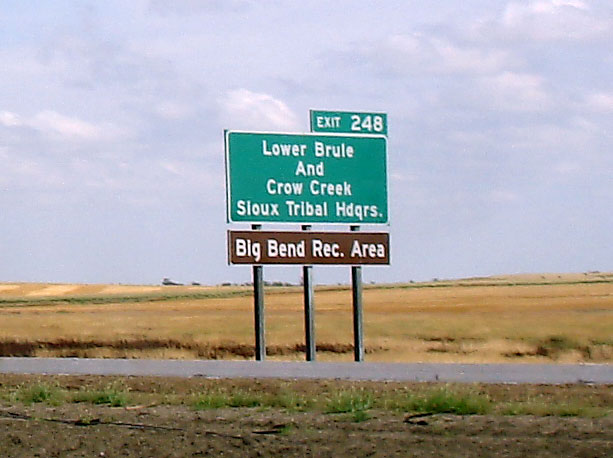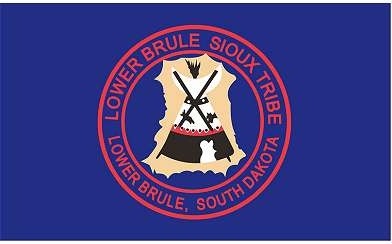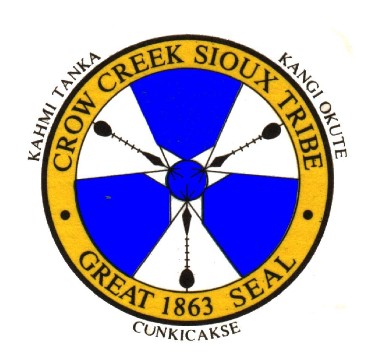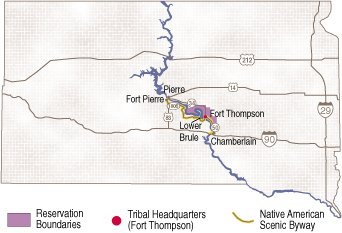|
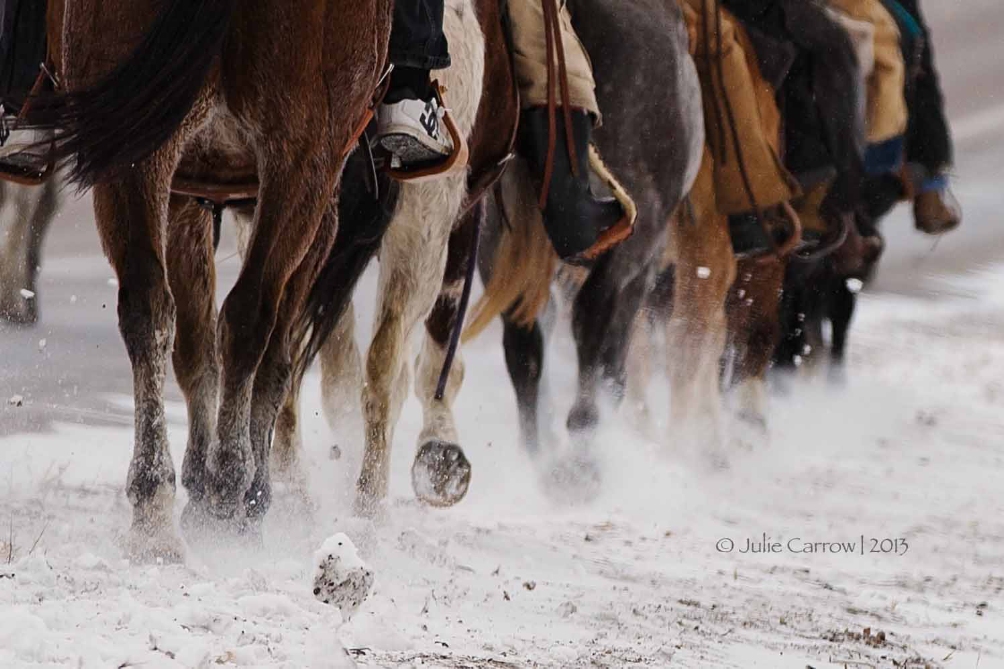
©
Julie Carrow - 2013
Communities
where the Ride will be Hosted
Page 1 - South Dakota
|
Thank you to all the Communities
along the way. You feed, water and shelter our faithful horses
and you house and feed us. You laugh with us and you cry with
us, and we with you. Without your support every year we could
not complete the Ride.
|
|
Lower
Brule Reservation
Lower Brule Sioux Tribe
Division:
Teton
Band: Sicangu (Brule or Burnt Thigh)
Traditional Language: Lakota
Location: Lower Brule Reservation in Lyman and Stanley
counties of central South Dakota.
Land Area: 132,601 acres. The reservation includes nearly
80 miles of Lake Sarpe shoreline.
Major Employers: Lower Brule Sioux Tribe, Lower Brule Golden
Buffalo Casino, Bureau of Tribal Affairs, Native American Health
Service.
The Lower Brule Farm Corp. is the nation's number-one popcorn
producer.
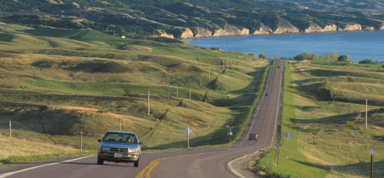
|
|
Lower
Brule Sioux Tribe
PO Box 187
Lower Brule, SD 57584-0187
Phone:
(605) 473-5561
Fax: (605) 473-5606.
www.lbst.org
|
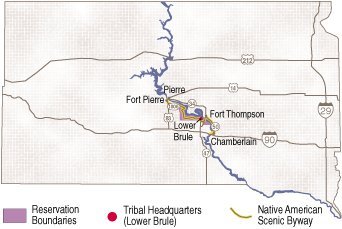
|

|
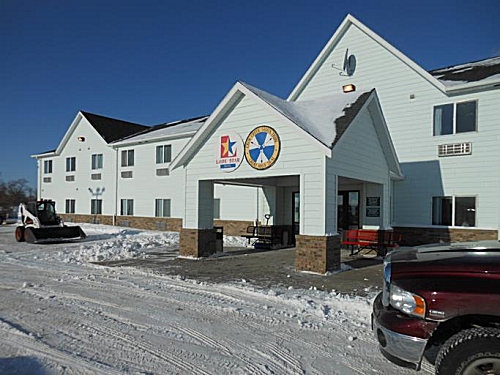 |
|
We
all want to say thank you to the Crow Creek Sioux for the
use of the rodeo grounds, our hotel rooms and the wonderful
meals at the casino. Wopida! the Riders
|
Crow
Creek and Fort Thompson
Crow
Creek Sioux Tribe
Bands:
Mdewakanton (People of Spirit Lake), Ihanktonwan (People of the
End)
Traditional Language: Dakota
Location: Crow Creek Indian Reservation in central South
Dakota
Major Industry: Agriculture
Established:
1 July 1863
Population: 206 (2000 census)
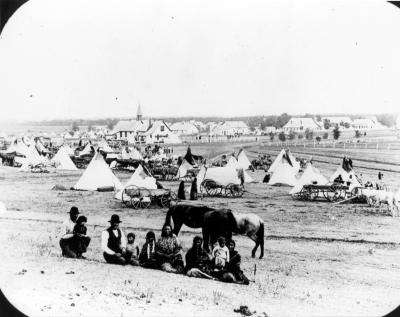
Taken from http://usdakotawar.org/history/aftermath/exile
Copyright is theirs.
|
|
Acts
of Congress in February and March 1863 abrogated, or revoked,
all treaties between the U.S. government and the Santee
Dakota. As a result, all but a few protected groups of Dakota
were exiled from Minnesota. Minnesota’s Ho-Chunk Indians
living in Blue Earth County near Mankato, eleven of whom
were tried for participation in the war, were also expelled
from the state. This expulsion ushered in an era of bare
survival for the Dakota, as well as the disintegration of
many families.
In May of 1863 1,300 Dakota were loaded onto steamboats
and sent to Crow Creek reservation. Crowded onto the boats
and weakened by imprisonment, many died on the voyage. The
new reservation was desolate and food was scarce. In the
first six months at Crow Creek more than 200 Dakota people
died, most of them children.
John Williamson, the son of missionary Thomas Williamson,
accompanied the Dakota to Crow Creek and was instrumental
in their survival. During the winter of 1863, he convinced
Colonel Thompson to allow some of the Dakota men to go on
a buffalo hunt, which furnished them with enough meat to
last through the winter. "It is not starving to death
here yet, but it is starvation all the time." John
P. Williamson, Crow Creek, Dakota Territory, January 6,
1864.
See
more at: http://usdakotawar.org/history/aftermath/exile#sthash.8Cy1DA5n.dpuf
|
From one of the
Riders:
"By the time they were sent to Crow Creek, most
of the people left were women. A lot died along the way,
a lot died when they got here. I've read lots of journals
from soldiers and missionaries. One of the soldiers mentioned
that the women would go to the horse corrals each morning
and pick grain from the horse feces to feed their children.
A lot of honorable women also had to resort to prostitution
to feed their children. These are the things they were forced
to do. To us Dakota people, women are sacred, and should
be treated as such. I want to make sure they're recognized
for their strength, perseverance, wisdom, and intelligence."
Peter Lengkeek, Crow Creek, 2011
|
|
|
Wessington
Springs

PO Box 132, Wessington
Springs, South Dakota 57382
605-539-1929
www.wessingtonsprings.com
https://www.facebook.com/pages/Wessington-Springs/141959215831660
Many thanks go to Jessie
Rogers, Brian Heinricks, the Wessington Springs 4H Building
and the Wessington Springs Lutheran Church.
Gann Valley

Gann Valley, county seat of Buffalo County, is a small community
nestled among the rolling plains of central South Dakota. Agriculture,
in particular the
raising of livestock and dry land farming, is the basic industry
of the area. It is the smallest County seat in the United States
with a population of 14.
www.gannvalley.com
|
|
Woonsocket
The Town with the Beautiful Lake..

The City of Woonsocket
began in 1883 at the junction of the Chicago, Milwaukee, and
Saint Paul Railroads. The superintendent of the railroad was
C.H. Prior,
and he named the new town Woonsocket, after his home town of
Woonsocket, Rhode Island. Lake Prior, located in the center
of town, is named after Mr. Prior.
The town of Woonsocket grew rapidly. The first day lots were
offered for sale, 50 lots were sold. Woonsocket grew so fast
that it was called “Boomstrucket.”
www.woonsocketsd.com
|
|
Howard

Howard, South Dakota
received its name on the 4th of July in 1881. The town’s
name, Howard, was in honor of the founder’s son that had
died shortly before the celebration.
Howard, SD became the
agricultural center of Miner County as the pioneers came flooding
into the homestead farm lands. The economy in South Dakota started
changing in the late 1920’s with the depression, drought
and roads being paved to large towns. Howard’s enterprising
town people managed to stay alive.
www.cityofhoward.com/
|
|
Madison

Madison, South Dakota
area was settled In the 1860’s by German and Norwegian
homesteaders.The many surrounding lakes were definitely a drawing
factor. The landscape reminded the settlers so much of the capital
of Wisconsin that they gave the fledging town the same name.
Madison, South Dakota
was founded in 1875 as the railroads started their westward
tracks. Madison and Herman competed for the county seat but
reached a compromise and both villages moved to a halfway point,
merging and taking the name of Madison. The town began as an
agricultural area, agriculture developed it, and agriculture
still supports it today.
www.cityofmadisonsd.com
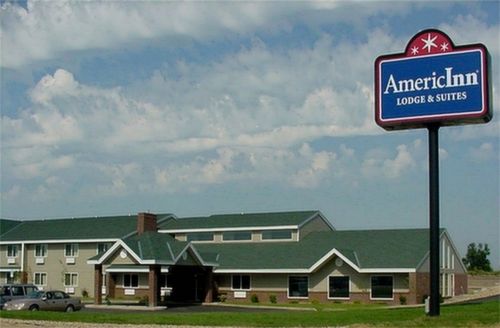
AmericInn Madison
504 10th Street Se
Madison, SD 57042
Americinn_Madison_South_Dakota
|
|
Flandreau Santee Sioux
Tribe
Division: Santee
Bands: Mdewakanton (People of Spirit Lake),Wahpekute
(Leaf Shooters)
Traditional Language: Dakota
Locations: Tribal land in south-eastern South Dakota,
north of Sioux Falls. Tribal offices in Flandreau.
Land Area: 2,356 acres (without boundaries)
Major Employers: Flandreau Indian School, Flandreau Santee
Sioux Tribe, Royal River Casino
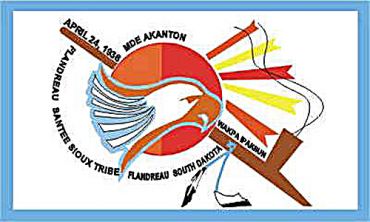
|
Flandreau Santee
Sioux Tribe
PO Box 283
Flandreau, SD 57028-0238
Phone:
(605) 997-3844
Fax: (605) 997-3878.
www.fsst.org
|
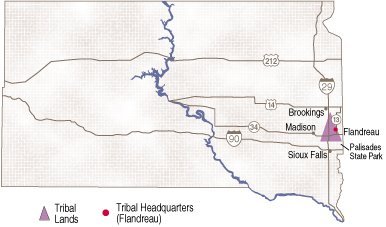
|
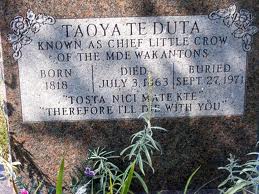
Mdewakanton Dakota Chief
Little Crow, Taoyate Duta, is buried in Flandreau Cemetery.
If you manage to go there look closely at what is said on his
gravestone.
Every year, the Riders visit, pay their respects and pray there
before they move on to Pipestone MN.
|
Page
2 - Minnesota
|



